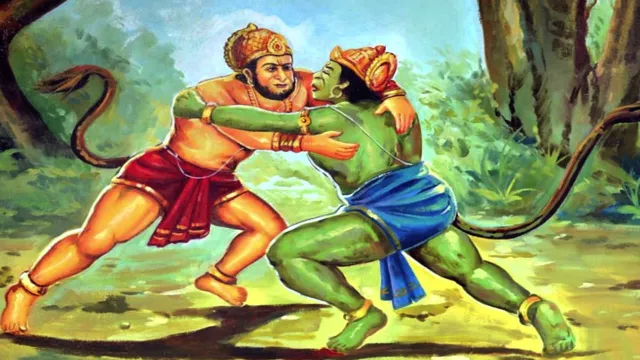In the grand tapestry of the Indian epic, the Ramayana, one character stands out as a symbol of strength, valor, and righteousness – Bali, the mighty Monkey King. While the Ramayana primarily revolves around the life and adventures of Lord Rama, Bali’s role in this timeless saga is both fascinating and pivotal. Join us on a journey to delve deep into the role of Bali in Ramayana and uncover the profound power that lay within this remarkable character.
Bali’s Introduction in the Ramayana:
The Ramayana, attributed to the sage Valmiki, is a narrative that spans across several cantos, chronicling the life and trials of Lord Rama, an avatar of Lord Vishnu. Yet, amidst this epic, Bali emerges as an unforgettable character.

Bali, a Vanara (monkey) king, was the ruler of the Kishkindha Kingdom, a thriving monkey kingdom. His reputation preceded him; he was known far and wide for his immense strength and valor. The story of Bali unfolds within the pages of the Kishkindha Kanda, which is the fourth installment of the epic Ramayana. Within this section, Rama and his devoted comrade, Hanuman, embark deep into the wilderness on a crucial quest to liberate Rama’s cherished spouse, Sita, who has fallen victim to abduction.
Also read – The Role of Sugriva in Ramayana: A Tale of Loyalty and Friendship Introduction
Also read – Ayodhya’s Architectural Heritage: Exploring the Richness of Its Temples
The Confrontation:
The initial meeting between Bali and Rama on Bali’s quest to rescue Sita begins with an unexpectedly tranquil interaction, marked by Rama’s profound respect and humility as he seeks Bali’s aid in locating her. Bali, though initially cautious, is genuinely struck by Rama’s graceful conduct and consents to provide his assistance. This initial rendezvous lays the foundation for a multifaceted connection between these two individuals.
The Duel:
However, the story takes a dramatic turn when Bali and his brother Sugriva become embroiled in a bitter feud over the kingdom. Bali’s valor and might are on full display during this intense battle. He exhibits the prowess of a warrior capable of astounding feats, singlehandedly defeating his brother Sugriva and establishing dominance.
The Injustice Unveiled:
Rama, witness to this apparent injustice, intervenes and challenges Bali to a duel. This confrontation is a pivotal moment not only in Bali’s character arc but also in the Ramayana itself. Rama’s divine prowess becomes evident as he defeats Bali in combat, ultimately revealing his true identity as Lord Vishnu.
The Power of Bali’s Character:
Bali’s role in the Ramayana extends beyond the battlefield. His character exemplifies the complexities of righteousness, power, and humility. He is a hero who, despite his mighty strength, ultimately falls victim to the divine purpose that Rama embodies.
Also read – The Enigmatic Role of Jamvant in Ramayana
Bali’s death brings forth a profound realization among the characters and the readers alike. It underscores the idea that power, when not coupled with moral and ethical principles, can lead to one’s downfall. Despite Bali’s formidable might, his conceitedness and unjust deeds ultimately paved the path to his downfall.
Conclusion:
The role of Bali in Ramayana serves as a reminder of the intricacies of the human condition and the consequences of one’s actions, regardless of their strength or power. His character arc is a testament to the timeless moral lessons embedded within this ancient epic. Bali’s legacy endures not only as a symbol of strength but also as a cautionary tale about the importance of humility, righteousness, and the power of destiny in the grand narrative of the Ramayana.
Also read – Exploring the Divine Beauty of Shrinathji Temple in Nathdwara
